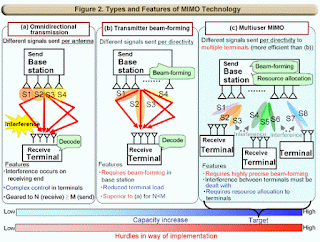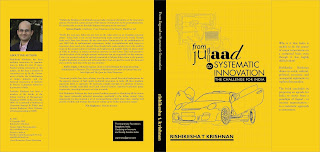Last week, I wrote about the fascinating story of Dr. A.
Paulraj’s contribution to the MIMO technology, one of the key technologies providing
the backbone of 4G telecom networks. Another speaker at the same DRDO seminar
was Baba Kalyani, Chairman & Managing Director of Bharat Forge Ltd. (BFL).
BFL is only now embracing R&D-driven innovation through initiatives such as
a special MTech programme at IIT Bombay and a drive towards patented technologies
of its own (Mr Kalyani mentioned that BFL has filed 8 patents in the recent
past). But BFL has displayed an admirable level of innovation in other ways,
and Baba Kalyani related that story to the audience.
Innovation at BFL
Baba Kalyani emphasized the the importance of focusing
innovation on leadership and governance for lasting change and impact. While he
clearly had his mind on national politics, he used his own example – the
transformation of Bharat Forge from a small forging company near Pune to the
largest forging company in the world – to make his point.
Mr. Kalyani described how BFL originally believed that its
low labour costs gave it a competitive advantage. This low labour cost came
from using a semi-skilled workforce that at one time might have been paid as
little as Rs. 500 a month. However, for years, BFL struggled to make a mark in
the export market because it was never able to reach the level of consistency
that was expected by demanding customers. This hurt Baba Kalyani and his
colleagues because they had a burning desire to be competitive in the
international market.
A pithy comment by a Japanese consultant that consistent
quality could never be obtained in a context where employees took so many
breaks caused Baba Kalyani to re-think his whole approach to metal forming. In
1988, he moved BFL to an automated forging process after making major
investments in hydraulic presses. And, he replaced his 2,500 strong blue collar
workforce by a 700-member skilled white collar workforce through a voluntary
retirement scheme. Today, employees earn not less than Rs. 30,000 a month, but
BFL is the leader of the world forging industry. I liked a comment Mr. Kalyani
made in this context: “A well-educated workforce allows you to scale up
exponentially.”
Other innovative decisions taken by Baba Kalyani in
transforming BFL included acquiring a forging company in England, and then
selling off its assets while retaining only its order book; acquiring a
specialized forging company in Germany in order to get closer to OEM customers
and be involved in the design and development of forged components right at the
time when a new vehicle is being designed (Source: Ramachandran & Mukherji,
2005).
Risk Mitigation
One of the questions put to Baba Kalyani was regarding the
risks involved in making such a major transformation, and what risk mitigation
strategy he had followed. (This question often comes up in classroom discussion
as well when we discuss the powerful case on Bharat Forge written by my
colleagues J. Ramachandran and Sourav Mukherji). From Baba Kalyani’s response,
it appears that he did not have an explicit risk mitigation approach. But he
was convinced that business could not be conducted as before if BFL were to
achieve its dream of becoming a leader in the forging industry, and this
conviction made him determined to pursue radical change.
Innovation in Public Governance
Baba Kalyani
concluded by saying that radical innovations are needed in public institutions
and political governance as well and that those are the areas in which
innovation would deliver the most value. He emphasized the importance of
accountability and execution – he lauded the new National Manufacturing Policy (NMP)
that has (finally) acknowledged the importance of manufacturing to India’s
future, but wondered aloud how manufacturing as a percentage of GDP could slip
from 17% to 15% when the NMP seeks to take it past 20%!
Debate on Talent
One of the interesting debates in the seminar was on the
subject of talent. Baba Kalyani expressed concern about the low employability
levels of students from engineering and other colleges. While his own company
worked closely with some colleges in Maharashtra to help them provide better
quality education, this is inadequate to solve larger systemic problems. He
appreciated the growth in the higher education system – in the early 1970s,
there was just one engineering college in Pune, today there are 35 – but felt
that there are serious challenges regarding the quality of output.
In fact, at the seminar, there was a consensus that the
quality of higher education has declined over the years, though there wasn’t an
equal degree of unanimity on what has caused this (Baba Kalyani hinted at too
much political involvement in higher education, though he did not explicitly
say so!).
Professor Anil Gupta argued that the work done by students
would become more relevant and useful if industry would only take more interest
in what they are doing. He pointed to the thousands of final year engineering
projects that are done every year that never get put into practice. He urged the audience to visit Techpedia, the
portal he and his colleagues have created that has a huge database of final
year projects done by students from all over India. He gave examples of student
projects that could have major industry and social impact if only they were
implemented.
Professor Gupta urged the creation of more challenge awards
to excite our students and use their creativity and ingenuity to solve
important problems.










































